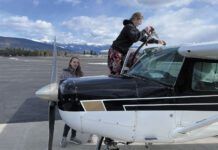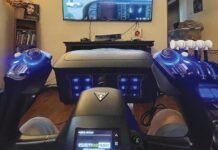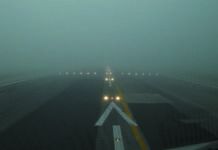Its a given that a large deficiency in GA training is the lack of nuts-and-bolts mechanical information. Weve all seen pilots-student and otherwise-pre-flighting, checklist in hand, without a clue of what to look for.
Owners in particular have an incentive to fill in these chuck holes on the road of knowledge, especially after the first couple of annual invoices, which appear to be executed in Sanskrit, except for all the zeros.
We recently attended one of the Cessna Pilots Associations two-day seminars and found it to be a useful, cost-effective method for an owner/pilot to address this knowledge gap. CPA was founded in 1984 by John Frank, former director of the American Bonanza Society. It focuses almost exclusively on the piston fleet, with about 11,000 members internationally. The two instructors for our seminar were Tom Carr and Steve Ells, both of the Technical Staff at CPAs Santa Maria, California HQ.
Its not possible to be all things to all people, nevertheless we were impressed with the presenters efforts to keep the technobabble to a minimum and with their ability to mix the basic with the more esoteric. It was apparent that both Ells and Carr know their stuff about 182s.
The emphasis throughout was on real world helpful hints and practical advice on what issues were significant and how they could be accomplished with a minimum fuss. The official party line on parts was always the properly labeled, official FAA Good Housekeeping approved component.
Purely as an aside, of course, they just happened to mention on more than one occasion that a particular item from Pep Boys was precisely the same part, at a lot less cost. The course materials are extensive and include a wealth of material which would benefit immeasurably from a good index and table of contents. The textbook is chock-a-block with hundreds of helpful hints and how-tos ranging from servicing the nose strut to checking the rigging, with lots of owner-friendly preventive maintenance or inspection along the way.
Weve always been frustrated with the publications that caption photos of mechanical components with harumphs about the obviously terrible condition of the flapdingy on this bushfizzle. It was refreshing to have someone point to the part in question and explain its relationship to the component or issue under discussion.
Similarly, one of the more valuable portions of the class is the hands on walkaround of two aircraft, both supplied by seminar attendees, which consumed most of the first afternoon. Interesting things popped up during this session, including the home grown flap reskin fabricated without the trailing edge reinforcing rib.
Diagnostics
One of the classroom topic areas we found of particular interest was the broad range of diagnostic information available during a properly accomplished compression check. Not content with horseshoe-and-hand-grenade bleed readings, the presenter went into detail about wear steps and other potential problems which could be detected at positions other than top dead center.
Another point of value was the fairly extensive discussion of rigging and how to check it. Out of rig is a ubiquitous label pasted onto a broad range of perceived flight problems which tends to be treated as nigh unto metaphysical by many pilots.
Following that hour of classroom discussion, we were able to run down within minutes precisely what had been causing a small but persistent right wing low tendency, which we had squawked off and on to the mechanic for a couple of years without success.
For those without considerable confidence in their understanding of power plant management, the CPA class is worth the freight for that discussion alone. A couple of difficulties with the seminar are worth noting.
Some attendees thought more attention should be paid to the fuel-injected Lyc found in the new 182. Others felt the presenters were on solid ground when talking about mechanical issues but terra got a little less firma during the discussion of emergency procedures. One notable example was the recommendation that, if you know youre landing with a flat nose tire, you should have a passenger move into the baggage compartment for landing. When the group pointed out that directing an unbuckled person into the tail of an aircraft about to execute an abnormal landing, the instructor allowed as how that might need a little re-thinking.
Widely Available
CPA offers about a dozen seminars each year with type-specific classes on the 150/152/172 (combined), the regular and R/TR 182, the 177/177RG, the 206, 210, and the 300s. The 210 and 300-series seminars are three days; all others are two.
All classes are conducted over a weekend, a plus for busy owners. The best and most current information about seminar availability can be obtained from their website or via the weekly ATIS e-mails. About half the classes are conducted at CPAs home base in Santa Maria, California, with the others held in Dallas and Cincinnati. Costs range from $335 for the $182 to $435 for the twins. A second partner in the same aircraft can attend for half price.
You don’t have to be a CPA member in advance to sign up. Theyll simply tack on the $45 for a years membership for the U.S., Canada and Mexico ($55 elsewhere) to the seminar cost. Contact Cessna Pilots Association at P.O. Box 5817 Santa Maria, CA 93456, 805-922-2580 or www.cessna.org.
-by Jane Garvey




